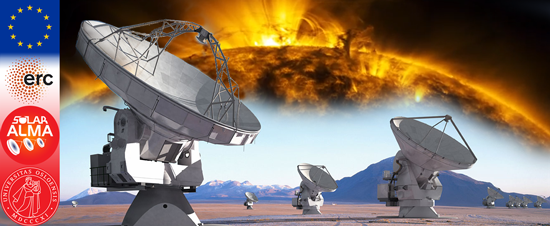- It has been very nice to work at ITA so far with nice colleagues and stimulating working environment. However, due to pandemic and consequent lock down, I haven't had the chance to explore Oslo very much yet, Maryam explains.
With a bachelor and master of science in Physics from Alzahra University in Tehran, Iran, Maryam went to Gothenburg in Sweden where she did her Ph.D. in Radio Astronomy and Space Science. After 5,5 years at Chalmers University of Technology and Onsala Space Observatory she looked to RoCS and Oslo.
Working at RoCS provides a great opportunity to expand my knowledge on solar and stellar activity and implement the information in models of evolved stars as an important missing factor.
During my PhD, I started a project aiming to study the impact of UV radiation on the chemistry of the outflow that surrounds evolved stars at late phases of stellar evolution. This is an important step to better understand the future of our Sun.

New high resolution observational data with top-class observational facilities opens a new era for us to study the UV chemistry more precisely and improve our theoretical models. For this aim, I applied for observational data with Atacama Large Millimeter Array (ALMA) and Atacama Pathfinder Experiment (APEX) towards a sample of UV bright evolved stars. In addition, I have been developing a physical-chemical code to simulate the UV chemistry in evolved stars.
- What are you trying to find out?
- I am going to mainly work on ALMA Solar and Stellar observations. I will be involved in the “SolarALMA” project which aims to understand the outer layers of the solar atmosphere and subsequently Solar coronal heating problem by using mm/sub-mm observational data.
I am also involved in the EMISSA project which aims to understand the stellar activity of main-sequence stars in a more general picture.
Currently, I am analysing ALMA observations of a sample of UV-active evolved stars which I gained during my PhD studies. We aim to qualify the impact of inner UV radiation on the chemistry of the outflow around the star.
- How do you plan to answer to the main question?
- My projects are combination of simulation and observation. I mainly perform radiative transfer analysis and physical-chemical modelling to interpret and understand our observational data.
- What brought you to RoCS and Oslo?
- RoCS is one of the best and well-known institutes in Solar physics, therefore I was excited to join the RoCS to broaden my knowledge in Solar physics and also share my experience in stellar physics which are complementary.
In addition, Norway’s fascinating landscapes and fjords was an extra motive to move to Norway.

